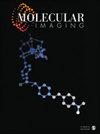促性腺激素释放激素类似物修饰的吲哚菁绿在子宫内膜异位症的靶向成像和图像引导下的病变切除
IF 2.4
4区 医学
Q3 BIOCHEMICAL RESEARCH METHODS
引用次数: 0
摘要
目标。在本研究中,我们采用促性腺激素释放激素类似物修饰的吲哚菁绿(gnrhai - icg)来提高术中子宫内膜异位症病变的识别和切除的准确性。方法。免疫组化和免疫印迹法检测促性腺激素释放激素受体(GnRHR)在子宫内膜异位症组织和细胞系中的表达。采用荧光显微镜和流式细胞术检测GnRHa、GnRHa-ICG和ICG的体外结合能力。采用近红外荧光(NIRF)成像系统和荧光导航系统对子宫内膜异位症小鼠模型进行体内成像。用共聚焦荧光显微镜测定离体结合能力。结果。gnrhai -ICG对子宫内膜异位症细胞和组织的结合能力明显强于ICG。在子宫内膜异位症小鼠中,gnrhai -ICG在腹腔内给药后特异性成像子宫内膜异位症组织(EMTs),而ICG在肠道中显示信号。gnrhai - icg在给药后2 h显示出最高的荧光信号,在给药后48 h具有良好的信噪比。与传统白光下手术相比,靶向NIRF成像引导手术完全切除子宫内膜异位症病变,敏感性为97.3%,特异性为77.8%。小鼠血常规、血清生化及组织病理学均未见明显毒性。结论。gnrhai - icg可特异性识别和定位子宫内膜异位症病变,指导病变完全切除,准确度高。本文章由计算机程序翻译,如有差异,请以英文原文为准。
Targeted Imaging of Endometriosis and Image-Guided Resection of Lesions Using Gonadotropin-Releasing Hormone Analogue-Modified Indocyanine Green
Objective. In this study, we utilized gonadotropin-releasing hormone analogue-modified indocyanine green (GnRHa-ICG) to improve the accuracy of intraoperative recognition and resection of endometriotic lesions. Methods. Gonadotropin-releasing hormone receptor (GnRHR) expression was detected in endometriosis tissues and cell lines via immunohistochemistry and western blotting. The in vitro binding capacities of GnRHa, GnRHa-ICG, and ICG were determined using fluorescence microscopy and flow cytometry. In vivo imaging was performed in mouse models of endometriosis using a near-infrared fluorescence (NIRF) imaging system and fluorescence navigation system. The ex vivo binding capacity was determined using confocal fluorescence microscopy. Results. GnRHa-ICG exhibited a significantly stronger binding capacity to endometriotic cells and tissues than ICG. In mice with endometriosis, GnRHa-ICG specifically imaged endometriotic tissues (EMTs) after intraperitoneal administration, whereas ICG exhibited signals in the intestine. GnRHa-ICG showed the highest fluorescence signals in the EMTs at 2 h and a good signal-to-noise ratio at 48 h postadministration. Compared with traditional surgery under white light, targeted NIRF imaging-guided surgery completely resected endometriotic lesions with a sensitivity of 97.3% and specificity of 77.8%. No obvious toxicity was observed in routine blood tests, serum biochemicals, or histopathology in mice. Conclusions. GnRHa-ICG specifically recognized and localized endometriotic lesions and guided complete resection of lesions with high accuracy.
求助全文
通过发布文献求助,成功后即可免费获取论文全文。
去求助
来源期刊

Molecular Imaging
Biochemistry, Genetics and Molecular Biology-Biotechnology
自引率
3.60%
发文量
21
期刊介绍:
Molecular Imaging is a peer-reviewed, open access journal highlighting the breadth of molecular imaging research from basic science to preclinical studies to human applications. This serves both the scientific and clinical communities by disseminating novel results and concepts relevant to the biological study of normal and disease processes in both basic and translational studies ranging from mice to humans.
 求助内容:
求助内容: 应助结果提醒方式:
应助结果提醒方式:


